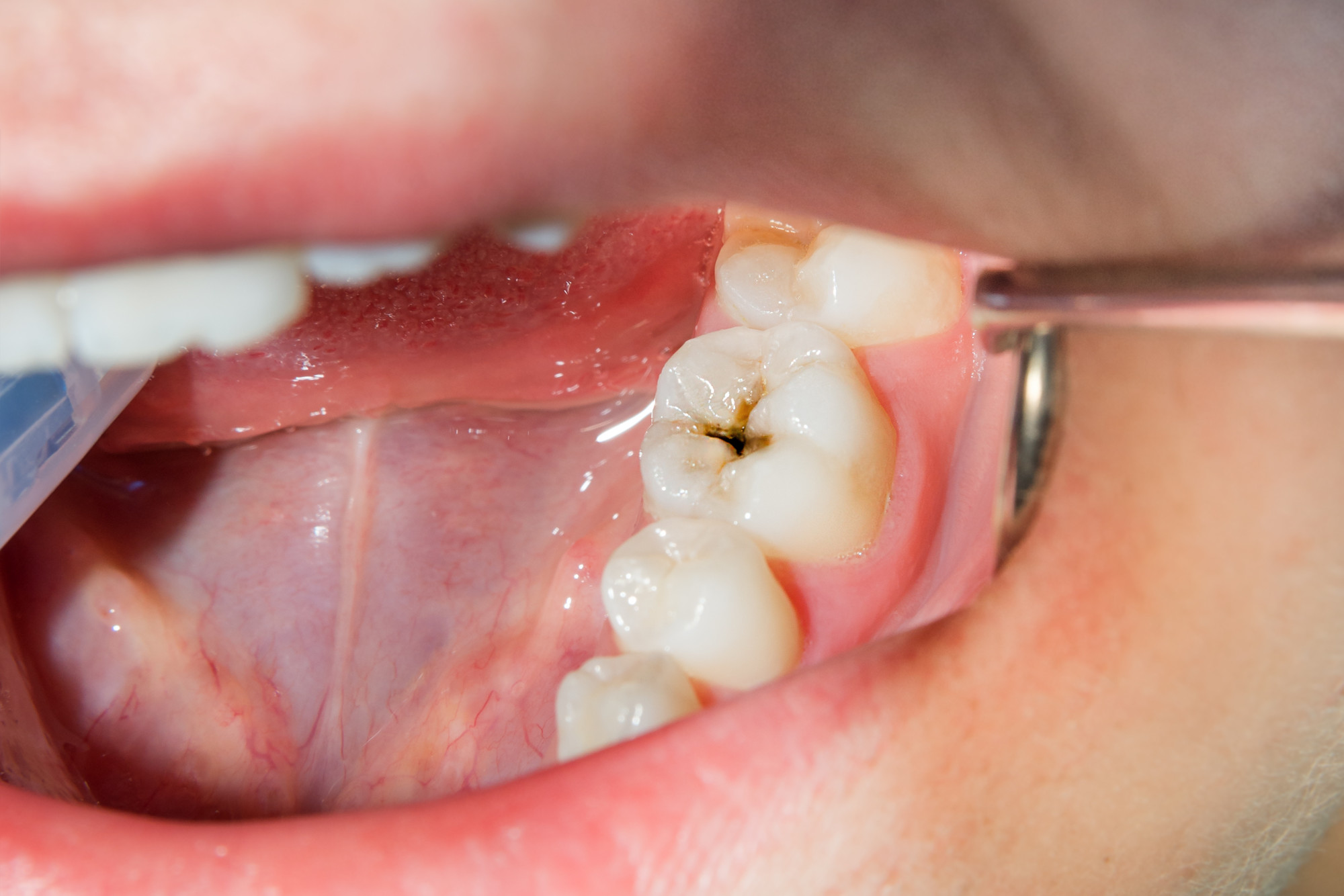Food traps cavities: a sobering reality that lurks in our daily diets. Embark on a journey to uncover the hidden dangers lurking within seemingly innocuous foods, unraveling their insidious role in eroding our dental health. Join us as we delve into the depths of cavity-causing culprits and empower you with knowledge to safeguard your precious pearly whites.
From fermentable carbohydrates to sugary treats, we’ll expose the dietary pitfalls that pave the way for cavities. Together, we’ll explore practical oral hygiene practices, dietary modifications, and professional dental care strategies to combat these food traps and maintain a radiant, cavity-free smile.
Food Types That Trap Cavities
Cavities are a major dental problem that can affect people of all ages. They are caused by bacteria that feed on the sugars in food and produce acids that damage the teeth. Fermentable carbohydrates are a type of sugar that is easily broken down by bacteria in the mouth.
These carbohydrates are found in many common foods, such as bread, pasta, rice, and potatoes.
The texture of food can also affect the risk of cavities. Sticky foods, such as candy and dried fruit, are more likely to stick to the teeth and provide a food source for bacteria. Foods that are consumed frequently are also more likely to cause cavities, as they give bacteria more opportunities to produce acids.
Common Foods High in Fermentable Carbohydrates
- Bread
- Pasta
- Rice
- Potatoes
- Candy
- Dried fruit
- Fruit juices
- Soda
Oral Hygiene Practices to Prevent Cavities

Maintaining proper oral hygiene is crucial for preventing cavities. Daily brushing and flossing are essential practices that help remove plaque and bacteria from teeth and gums, reducing the risk of tooth decay.
Brushing Techniques
- Use a soft-bristled toothbrush and fluoride toothpaste.
- Brush for at least two minutes, twice a day.
- Angle the toothbrush at a 45-degree angle to the gum line.
- Use gentle, circular motions to clean all surfaces of each tooth.
- Don’t forget to brush the tongue to remove bacteria.
Flossing Techniques
- Use dental floss or interdental brushes to remove plaque and food particles between teeth.
- Gently slide the floss between teeth, curving it around the tooth to clean all surfaces.
- Don’t force the floss or snap it against the gums.
- Floss at least once a day, preferably before bedtime.
Mouthwash
Antibacterial mouthwashes can help reduce cavity-causing bacteria in the mouth. Use a mouthwash containing fluoride or chlorhexidine, following the manufacturer’s instructions.
Dietary Modifications to Reduce Cavity Risk
Dietary choices significantly impact oral health. Minimizing fermentable carbohydrate intake and incorporating cavity-fighting foods can effectively reduce the risk of developing cavities.
Fermentable carbohydrates, such as those found in sugary foods and drinks, are broken down by oral bacteria into acids that attack tooth enamel. To reduce their intake, consider limiting the consumption of processed snacks, sugary beverages, and refined carbohydrates.
Cavity-Fighting Foods
Incorporating cavity-fighting foods into your diet can neutralize acids and strengthen teeth. These include:
- Dairy products: Milk, cheese, and yogurt contain calcium and phosphate, which help strengthen tooth enamel.
- Leafy green vegetables: Spinach, kale, and broccoli contain fiber, which helps remove plaque from teeth.
- Apples and pears: These fruits contain malic acid, which can help whiten teeth and reduce bacteria.
- Green tea: Contains polyphenols, which have antibacterial and antioxidant properties that protect teeth from decay.
Sugar Substitutes and Cavities
Sugar substitutes, such as xylitol and erythritol, do not promote cavity formation. They are not fermentable by oral bacteria, making them a suitable alternative to sugar in products like chewing gum and toothpaste.
Professional Dental Care for Cavity Prevention

Regular dental checkups play a crucial role in preventing cavities. These checkups allow dentists to examine the teeth, detect any early signs of decay, and recommend appropriate preventive measures. Professional cleanings remove plaque and tartar from the teeth, which are the main culprits in cavity formation.
Fluoride Treatments
Fluoride is a mineral that strengthens the tooth enamel, making it more resistant to acid attacks. Professional fluoride treatments involve applying a high concentration of fluoride to the teeth, which helps to prevent cavities.
Dental Sealants
Dental sealants are thin, protective coatings applied to the chewing surfaces of teeth. They create a barrier between the teeth and plaque, preventing acids and bacteria from reaching the tooth enamel. Dental sealants are particularly effective in preventing cavities in children and adolescents.
Additional Considerations for Cavity Prevention

Beyond regular oral hygiene practices and dietary choices, several other factors can influence cavity risk and oral health. Understanding these additional considerations can help individuals develop a more comprehensive approach to cavity prevention.
Genetics and Lifestyle Factors
Genetics play a role in determining an individual’s susceptibility to cavities. Certain genetic variations can affect the composition and structure of teeth, making them more or less prone to decay. Lifestyle factors, such as smoking, excessive alcohol consumption, and a diet high in sugary and processed foods, can also increase cavity risk by damaging tooth enamel and creating an environment conducive to bacterial growth.
The Role of Saliva
Saliva plays a crucial role in protecting against cavities. It contains antimicrobial substances that help neutralize acids produced by bacteria and minerals that strengthen tooth enamel. Maintaining adequate saliva flow is essential for oral health, as it helps wash away food particles and bacteria that can contribute to tooth decay.
Maintaining a Healthy Oral Microbiome, Food traps cavities
The oral microbiome is a complex ecosystem of bacteria that live in the mouth. Maintaining a healthy balance of these bacteria is crucial for preventing cavities. Beneficial bacteria help protect against harmful bacteria that can cause decay. Practicing good oral hygiene, limiting sugar intake, and using probiotics can help support a healthy oral microbiome.
Expert Answers: Food Traps Cavities
Can I still eat my favorite sugary treats if I brush my teeth afterward?
While brushing your teeth is essential, it’s not a magic wand that erases the damage caused by sugary treats. The lingering effects of sugar can still contribute to cavity formation, so moderation is key.
I’ve heard that certain foods can actually fight cavities. Is that true?
Indeed! Foods rich in calcium, phosphorus, and fluoride, such as cheese, milk, and leafy greens, can help neutralize acids and strengthen tooth enamel, reducing your risk of cavities.
Is flossing really that important for preventing cavities?
Absolutely! Flossing removes plaque and food particles from between your teeth, where your toothbrush can’t reach. This helps prevent the buildup of bacteria that can lead to cavities.
